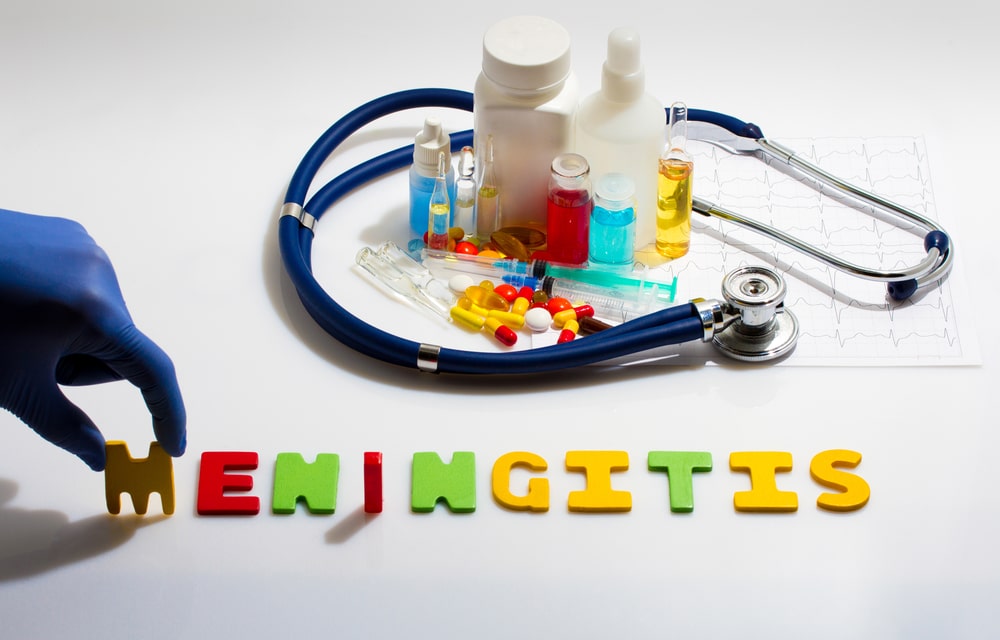There’s been an increase in deaths related to meningitis. Is this new outbreak something to fear?
When it comes to meningitis, the most common form that comes to people’s minds is Lyme disease, as it is the one you get from ticks.
However, the recent outbreak is for bacterial meningococcal disease, also known as bacterial meningitis, which, despite being a pretty rare disease, has been wreaking havoc since the start of the year.
The Centers for Disease Control and Prevention (CDC) issued a warning recently that the U.S. has been infected with a rare yet highly invasive strain of this type of meningitis, raising the number of cases reported last tear (94) to about 143 since the start of this year.
This disease causes inflammation and swelling of the membranes around the brain and spinal cord, and viral infections generally cause it.
Parasitic, bacterial, and fungal infections can also cause it, but the recent growth in the number of cases since the start of the year has started to cause concern amongst the medical world.
This concern is worrisome, as in the last 10 years there has been a decrease in both the cases and the deaths associated with them, but this year there seems to be an issue.
To find out more about meningitis, what causes concern, how to pinpoint symptoms, and how it is treated, keep on reading!

Who is the most at risk for meningitis?
Generally speaking, when we look at who is at the most risk for bacterial meningitis, the biggest risk group is young children, babies, teenagers, and young adults, as it has been seen to be more prevalent in this age group.
However, the CDC has cautioned that the current spike in meningitis cases has been disproportionately affecting Black Americans, all people aged 30 to 60 years old, and those who have human immunodeficiency virus (HIV).
In the case of the latter group, federal health officials make a special note for them to be more careful, as since HIV-positive people have weakened immune systems, any type of infection is more severe and more frequent!
The reason why the other two groups are affected disproportionately is not known yet, but research has given room to believe that there could be a gene mutation amongst these groups that could make them more susceptible to infection.
Despite this slew of meningitis infections affecting these specific groups, it does not mean that anyone outside of them is safe from this disease.
How does this disease spread?
The bacteria that causes meningitis, Meningococcal bacteria, can easily be spread through any throat or respiratory secretions; this means that the likes of saliva, spit, coughing, and kissing have a high likelihood of infecting another person.
The CDC also noted that sharing the likes of drinks, cigarettes, smoking devices, and weed.
Since people do not think about how the sharing of even water bottles can spread disease, it leaves them open to spreading the infection among themselves, with young adults being the most susceptible.
Young adults can be the most at risk of spreading the disease since they are more active in going to clubs and bars, where the exchange of fluids is more likely due to their proximity to other people and animated talking.
If someone infected were to cough vigorously, it would be likely to spread to everyone around them. And this is true for any event or venue that is packed.
One thing to keep in mind is that this disease cannot be transmitted through casual contact or by breathing in the same cigarette as someone infected!

Meningitis symptoms to keep in mind.
Meningitis symptoms tend to appear in any order, so it is good to keep all of them in mind.
The most common symptoms that occur in most cases are headaches, fever, and stiff necks, but other ones include vomiting, light sensitivity, confusion, and nausea.
Since the disease is caused by bacteria, it can end up causing bloodstream infections. These infections manifest as chills and fever, vomiting, fatigue, cold extremities, rapid breathing, diarrhea, several pains and aches, and, in the advanced stages of infection, a dark purple rash!
Meningococcal bacteria can also cause septic arthritis (which attacks the joint tissues and fluid). Yet, even if the bacteria has been the cause of it and for a bloodstream infection, both can end up not showing any signs of illness being present.
Federal officials also want people who carry the bacteria to also have it in their throat and nasal pharynx and not be aware of it. This is why it can spread without people knowing they have it.
Keep in mind that in some cases, meningitis symptoms can never appear, the rash cannot manifest as one, or it can fade away when pressed on.
Bacterial meningitis can be treated.
The silver lining is that bacterial meningitis is treatable with antibiotics if it has been caught in its early stages.
However, you have to keep in mind that this disease can advance quickly and can end up damaging the body before the antibiotics can take full effect.
This fast escalation of the disease is the reason why some end up losing their lives to meningitis, or they end up left with long-term issues that impact their lives in a significant way.
Some survivors can end up dealing with the likes of deafness in one or both ears and even amputation.
That’s why the CDC has been starting to issue warnings, and they are urging primary care providers and healthcare workers to be on high alert, especially when it comes to vulnerable groups, so they can catch any early stages of the disease quickly.
All in all, the risk of contracting any sort of meningitis is still relatively low, but that does not mean that you should not be aware of what is going on.
Since there is no revealed cause as to why the cases of meningitis have been increasing, it is better to know about it and how you can limit the chances of contracting it while also taking care of your health.
The federal administration is also urging the population to check if they have their vaccinations up to date and for those who have been in contact with a person who was infected to talk to their doctors about antibiotics as a preventive measure.

Is there a vaccine for this?
The good news is that there are vaccines that can offer protection against meningitis. The bad news is that they are generally available for children and young adults.
The most common ones are offered and recommended to adolescents between the ages of 11 and 12, with a recommendation for a booster dose at 16.
Others who should be getting them are freshmen who have never been vaccinated for this and are going to be living in residence halls for the first time!
These vaccines on the market are targeting different strains and causes of meningitis, and some of them include the strain that is behind these recent infections that have occurred all over the U.S.
It’s uncertain, as of recent years, whether those who have been ingested so far this year have contacted the bacteria despite being vaccinated.
The good news is that meningitis can be cured and dealt with if you manage to catch it early. However, it can be pretty discouraging when you end up being diagnosed with this disease. If you want to hear a first-hand account of someone who has gone through the disease and how it changed his life, we recommend this book from Amazon!
Meningitis is not the only dangerous disease that can attack your brain. Sometimes, the symptoms of this can be seen in other types of diseases that are just as dangerous. If you want to know more about brain tumors and the signs that need to be on your radar in case of anything, check out this article here!

























